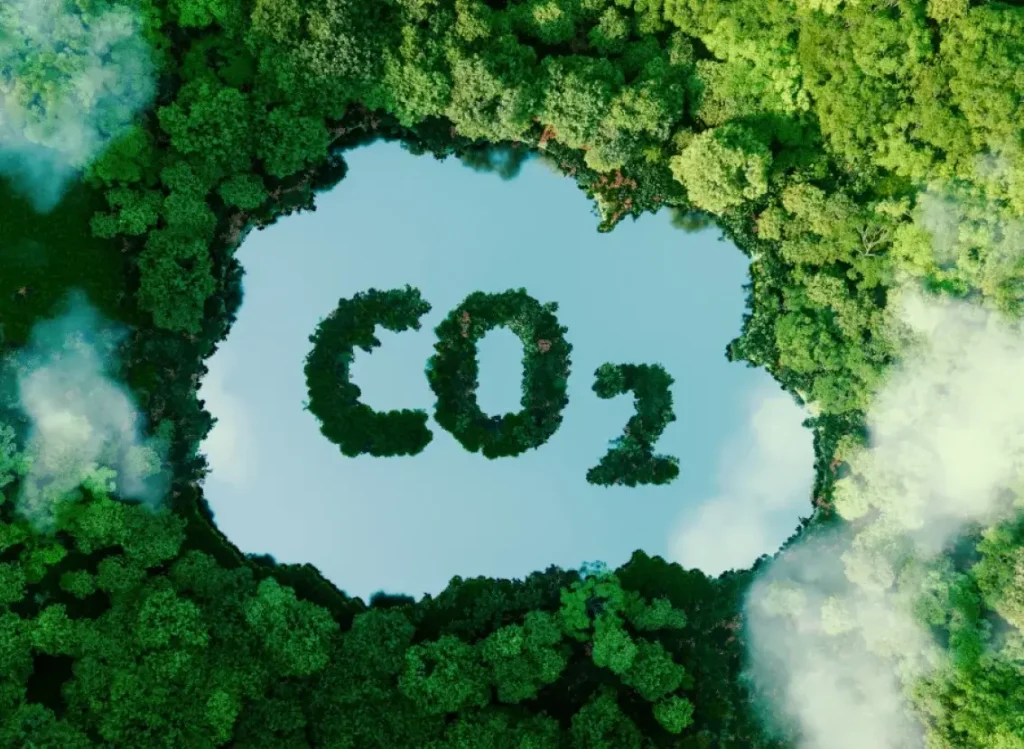Carbon credits are a fundamental tool in global strategies to combat climate change and reduce greenhouse gas emissions. In this article, we will present a guide to understanding how carbon credits work and how they can influence different economic sectors.
What are carbon credits
Carbon credits are an instrument that represents the reduction or elimination of one ton of CO2 equivalent. These credits are generated through projects aimed at reducing emissions that meet specific certification standards. Among the projects intended for this purpose you can find everything from the installation of renewable energies to reforestation.
To ensure that carbon credits represent emissions reductions, they must comply with the principle of additionality. That is, it must demonstrate that the emissions reduction is a direct consequence of the project to be financed and not simply the result of activities that would have been carried out anyway.
Another requirement is to avoid double counting. That is, prevent the credits used for a project from being counted twice. To do this, carbon purchase and sale transactions must be registered with national or international certifying entities.
What is the carbon market
Carbon markets are systems designed to buy and sell carbon credits. Individuals, companies and governments can purchase them to reduce or offset their own emissions. The key difference between the voluntary and mandatory carbon market lies in the regulation of emissions.
- Carbon credits in the voluntary market are primarily used to improve corporate sustainability and meet social responsibility goals. According to business objectives, they function as an instrument to offset emissions and achieve carbon neutrality.
- The acquisition of carbon credits in the mandatory market is focused on companies that must comply with their emissions reduction obligations. This market, regulated by governments or supranational entities, imposes limits on greenhouse gas emissions from certain industries or sectors.
To acquire carbon credits, you must first calculate your carbon footprint. At CO2 Revolution we use data analysis to measure the environmental impact of companies.
Impact on Influential Sectors
Carbon credits are widely represented in various economic sectors due to their ability to catalyze changes towards more sustainable and environmentally friendly models.
- Energy sector. Supporting solar, wind, hydroelectric and other forms of clean energy projects helps reduce dependence on fossil fuels and mitigate greenhouse gas emissions associated with energy generation.
- Industrial sector. The implementation of cleaner production technologies, the optimization of industrial processes to reduce energy and material consumption, and investment in energy efficiency measures stimulate the adoption of more efficient and sustainable practices.
- Transportation sector. Promotion of electric, hybrid and clean fuel vehicles, as well as improving infrastructure for sustainable mobility can be a catalyst for investment in low-carbon technologies.
Benefits of acquiring carbon credits
There are numerous reasons to buy carbon credits. Among them we highlight:
- Environmental impact. The main environmental benefit of purchasing carbon credits is the effective reduction of GHG emissions. By investing in these projects you contribute to mitigating climate change and protecting the environment.
- Social impact. Many carbon credit projects are implemented in local communities, which can generate significant social benefits. Some examples are the generation of local employment, improvement of infrastructure and services and increasing the sense of belonging by involving the community in sustainable initiatives.
- Economic impact. Carbon credit projects can generate additional income for local communities through the sale of credits, which can contribute to sustainable economic development.
Why do it with CO2 Revolution?
Carbon markets have a key role in achieving carbon neutrality by 2050. And, voluntary markets are a very useful system to help companies meet their commitment to sustainability.
In this sense, CO2 Revolution offers a way to reduce greenhouse gas emissions, facing challenges such as environmental integrity and transparency. We offer you the opportunity to achieve climate goals by supporting the growth of sustainable forests and driving the development of local communities.


